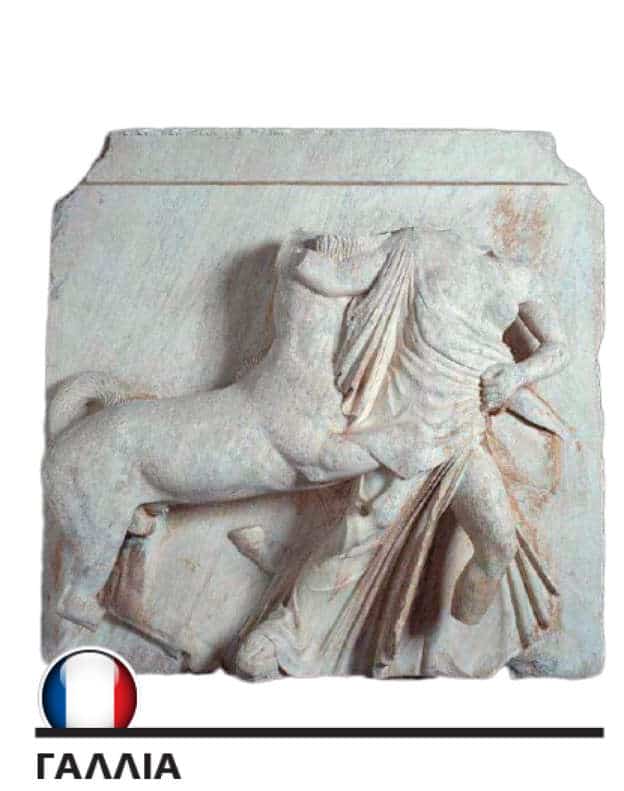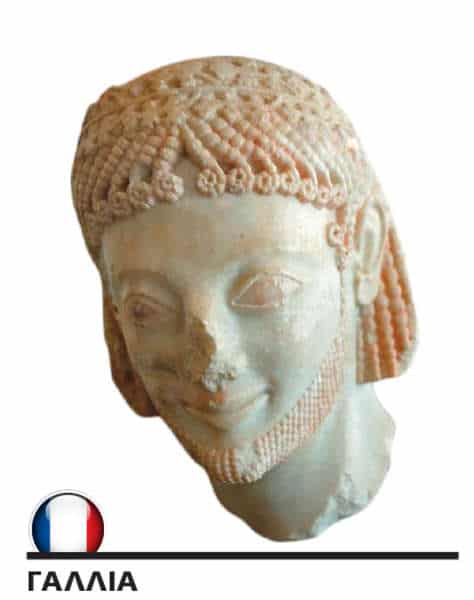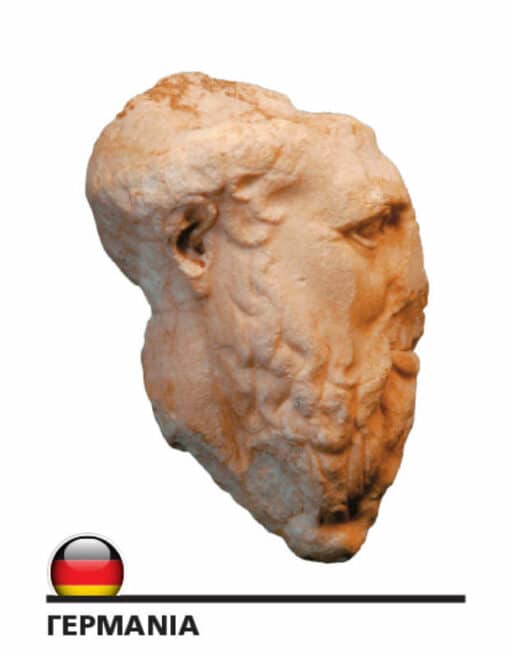Stronger than ever is the demand for the return of the Parthenon Sculptures from every corner of the Earth where they are scattered. Because in the consciousness of most expatriate masterpieces can be found in the British Museum, but there are still numerous fragments of the sculptural decoration of the emblematic monument in various museums around the world, which arrived there in different ways and at different times.
One of them is the Fagan fragment, which was returned from the Antonino Salinas Museum in Palermo to the Acropolis Museum, initially as a loan for eight years, but with the prospect of remaining permanently in Greek territory, as the a relevant request which is even supported by several cultural forces on the other side.
Discussions on the return of this gemstone from the eastern frieze of the Parthenon, depicting the gods of Olympus sitting to watch the procession and delivery of the veil to Athena, the patron saint of Athens, began in November 2020 and had a positive outcome, since in a few hours the part of the stone with the lower extremities of the goddess Artemis will now be where it belongs.
This agreement, as emphasized by the Regional Councilor for Cultural Heritage and Identity of Sicily Dr. Alberto Samona, "is of paramount importance as Sicily thus becomes, in fact, a forerunner in the return of his Marbles to Greece. Parthenon, contributing decisively to the debate that has been going on for a long time at a global level ".
Earlier, a movement of high symbolism and substance had taken place with the rendering by the National Archaeological Museum to the Acropolis Museum of ten fragments, up to 32 cm high, from sculptures that adorned the metopes, the frieze and the gables of the Parthenon, which had been previously identified by archaeologist George Despinis.
Two of them, a part of the head of a young man and a fragment of a man's head, found their exact place in the frieze. "This is a first but very important step in the effort to gather here, at the Acropolis Museum, all the smaller and larger parts of the Parthenon decoration that are now scattered in various museums around the world.
"The reunion of the Parthenon Sculptures is not a matter of distance, because, whether they are here in Athens or anywhere in the world, their destination is only the Holy Rock and this great museum", said meaningfully, during the official ceremony that took place, the Prime Minister Kyriakos Mitsotakis, who, in collaboration with the Ministry of Culture and Sports, has placed the issue of the reunification of the Parthenon Sculptures very high on the government's agenda, which is confirmed by his choice to officially place it in the autumn at both UNESCO and to British Prime Minister Boris Johnson.
A similar move to that of Sicily had been made in the past by the rector of the University of Heidelberg with the decision he took, in January 2006, to return to the Acropolis Museum a fragment from the sculptural decoration of the Parthenon which was located in his collection.
British museum
The collection of sculptures from the Acropolis of Athens, removed and stolen from Lord Elgin during 1979-1803 and on display since 1936 in the Duveen Hall of the British Museum, represents more than half of the surviving 75-meter-long Parthenon decoration sculpture from the initial 160 meters. Specifically, it includes 19 of the surviving forms of the gables, 16 of the surviving metopes, depicting battles between the Lapiths and the Centaurs, and 56 of the 97 surviving surviving frieze stones. At the moment, more than 50% of the uniquely masterful frieze of the Parthenon depicting the Procession of the Panathenaeans is trapped in a foreign place, waiting for decades for the moment to come when it will be renewed with the rest of its pieces in the Acropolis Museum.
The Sculptures stolen from Elgin and on display at the British Museum represent more than half of the 75-meter-long surviving Parthenon decoration sculpture

At the Louvre
The Louvre is the second major European museum to feature sculptures from the Parthenon.
The natural perpetrator in this case was the archaeologist and painter Louis François Sebastian Fovel, who in 1788 dismantled a metope on the south side of the Parthenon depicting a scene of the Centaur War with a perimeter width of 160 meters and a height of 1,21 meters and transported it to France, having obtained written permission from the sultan, on behalf of Count Marie Gabriel Florent Auguste de Souazel-Goufier, French consul in the Ottoman Empire.
This is the 10th of the total 92 metopes that Pheidias had painted and in which a Lapithida is depicted running trying to avoid a Centaur.
In August 2019, the French President Emanuel Macron had accepted the proposal of the Greek Prime Minister Kyriakos Mitsotakis for this meto to come as a loan from Paris to Athens in 2021 on the occasion of the 200th anniversary of the Greek Revolution. The problems caused by the pandemic, however, put obstacles in the above planning.

Metope on the south side of the Parthenon which depicts a scene of the Centaur War. Emanuel Macron had accepted Mitsotakis's proposal for the metope to come as a loan from Paris to Athens for the 1821 anniversary. The pandemic, however, postponed the return.
Another impressive sculpture, a large plate 2 meters from the eastern frieze of the Parthenon, known as the "Plaque of the Workers", is also located in the Louvre and depicts the young virgins who were commissioned by the city of Athens to weave and transport of the sacred veil on the Acropolis during the Panathenaic procession that started at Kerameikos.
The veil covered the stele of Athena that was kept inside the Erechtheion, the worship temple of the Holy Rock. In this plaque there are eight figures, two male and six female.
In the Louvre room with Greek antiquities we also find the Rampin Head, which belongs to the statue of Horseman Rampin, a skillfully sculpted archaic statue from the Acropolis of Athens, with a surviving height of 83 cm, which is attributed to the great glip. It was given this name by the French collector Pierre Raben, who had bought it in the 19th century. The rest of the statue is in the Acropolis Museum.
It is worth noting that the horseman's head was found in 1877 on the Acropolis and donated to the Louvre Museum, while the rest of the sculpture was discovered about a decade later in the Persian moat and was not associated with the head until 1936.
Carved in Pentelic marble by Pheidias is the 40 cm high Iris Head, also known as the Laborde Head, which is also in the French museum.

The Rampin Head, housed in the Louvre Museum, belongs to the statue of Horseman Rampin, which is attributed to the great sculptor Phaedimus
It belongs to the statue of the messenger of the gods Iris, which was detached from its trunk during the Venetian bombing of 1687 and the occupation of Athens and was transported by order of Doge Francesco Morosini from its secretary Sandro Gallo to Venice.
It was bought there by the German collector David Weber in 1824 and twenty years after the Marquis Leon de Lambord, only to be sold in 1928 to the Louvre. The mutilated trunk of the statue is in the British Museum.
In Central Europe
After the bombing of the Acropolis by Morosini in 1687, the great looting and criminal looting of the Parthenon Sculptures began. Among those looting the wreckage were some Danish officers who carried home two small heads of Centaurs and Lapiths along with parts from the back legs of the latter from the fourth southern metope of the frieze, depicting the battle of Cain with a Centaur, now housed in the National Museum of Denmark.
Fragments of the Parthenon frieze were also transferred to the Kunsthistorisches Museum in Vienna - including the heads of two figures on the north side of the frieze and the upper part of the sculptural trunk on the north side - to the Vatican - with one beheading a bearded man from another metope-, in Heidelberg, Munich and Berlin.
In Germany, meanwhile, there is a fairly large volume of Greek antiquities from the collection of German archaeologist Friedrich Thiers and shared between Heidelberg and Karlsruhe. It is estimated that more than ten fragments come from the Parthenon.

Since 2018, Greece has requested the return of a Centaur head from the Parthenon metope, which has been on display for 160 years at the Martin von Wagner Museum at the University of Würzburg.
In addition, since 2018, the Greek government has requested the return to our country of a Centaur head from the Parthenon metope, older than 2.400 years, which has been exhibited for 160 years at the Martin von Wagner Museum of the University of Würzburg, but without receiving a positive answer.
protothema.gr
